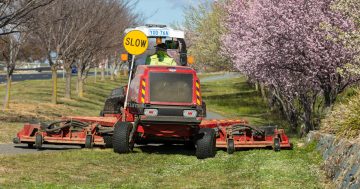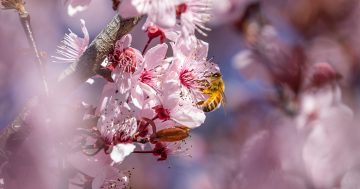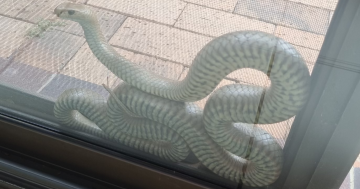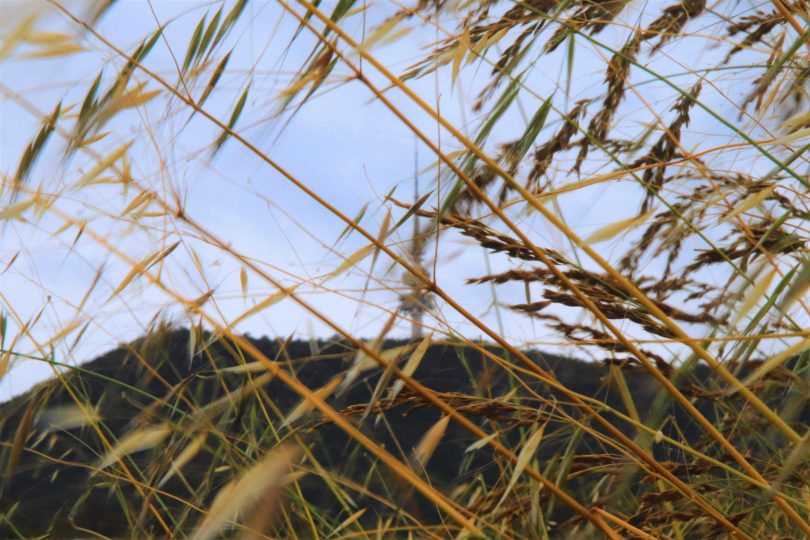
Canberra’s two annual grass pollen seasons are combining into one big season this year. Photo: Damien Larkins.
There’s no relief in sight for Canberrans who suffer from hay fever with the pollen season continuing to break records, and it may continue to peak into early 2022.
Pollen levels this year have already been the highest of the past decade, with several days in November at high and extreme levels.
ANU’s Canberra Pollen Count program director, Professor Simon Haberle, said more bad news for sufferers could still come.
“We’re in for a long grass pollen season,” he said.
“I would predict this year we’ll still see quite elevated grass levels through to Christmas and into the New Year.”
Canberra usually experiences two separate pollen seasons.
Temperate species flower in October and November, and subtropical grasses bloom in January and February.
However, this year the two seasons are set to combine into a long ‘mega season’.
“I am anticipating that gap between Christmas and into January will be closed,” said Professor Haberle.
“We’ll see a continuation of quite strong grass pollen in the air right up until probably the end of January.”
It’s been a particularly bad pollen season already in 2021.
The Canberra Pollen Count has been recording daily levels since 2007, and 2021 is the worst it has recorded.
“This year has been quite extraordinary,” said Professor Haberle. “It’s the worst grass pollen season we’ve had on record.
“What we’re seeing is numbers of days of really high grass pollen exceeding previous levels.”
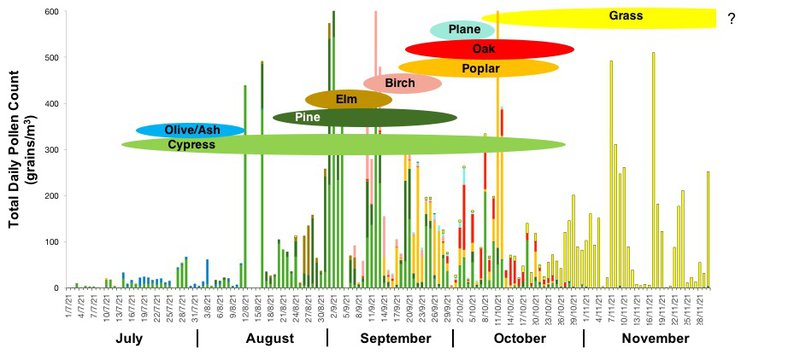
Canberra’s pollen levels have been extreme in 2021. Image: Canberra Pollen Count.
When Professor Haberle says high levels, he’s not kidding.
People start to feel the impact of grass pollen at 20 grains per cubic metre. Above that level is moderate, and above 50 grains is high.
When pollen reaches 100 grains, it’s considered extreme.
This year has been almost off the charts.
“We’ve recorded up to 510 grass pollen grains per cubic metre in one day,” said Professor Haberle. “That’s quite exceptional.
“[It’s] at least two-and-a-half times above what any other high amount has been in our records. What we’re experiencing at the moment is quite extraordinary and unprecedented.”
Normally extreme pollen level days are rare in the ACT.
“Most years see two to three days of extreme grass pollen, but this year we’re up to 20 days of extreme grass pollen that have been recorded during this spring period into December,” said Professor Haberle.
“That gives you a sense just how extreme.”
There are several factors contributing to the record levels of pollen in the ACT.
Extensive rain has caused high soil moisture levels, meaning grass has been growing wild.
“This time of year we’d normally start to see it browning off,” said Professor Haberle.
“But we’re seeing the grass pollen persist much longer than it has done in previous years.”
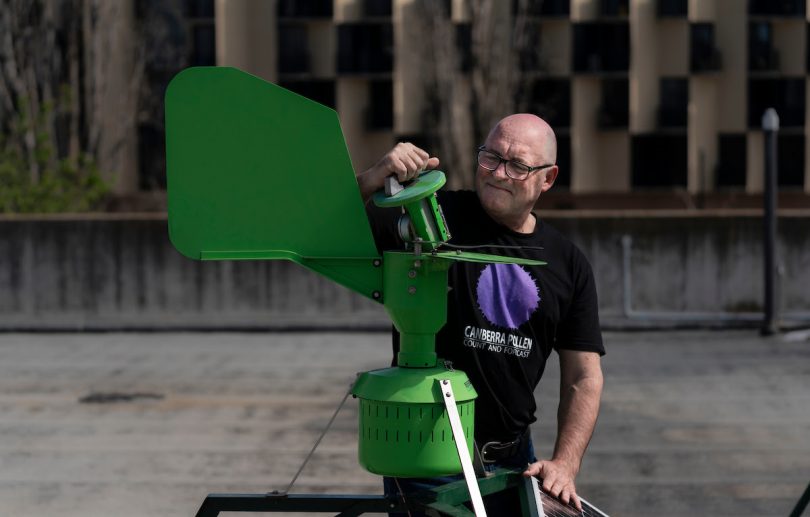
Professor Simon Haberle predicts this pollen season will continue into 2022. Photo: Jamie Kidston/ANU.
If you suffer from asthma or hay fever, you’ve no doubt been feeling the pressure.
“Everybody who I talk to about it has had anecdotes of just how bad it’s been this year,” says Professor Haberle.
“They’re always asking me when it’s going to finish, but I can’t give them too much good news at the moment.”
For now, the best advice is to reduce symptoms and exposure, including:
- Talking to your GP or pharmacist about medication.
- Staying inside or wearing a mask outside on extreme pollen days.
- Washing your clothes to reduce bringing pollen into your house.
For more information, visit Canberra Pollen or download the Canberra Pollen app for daily forecasts.












